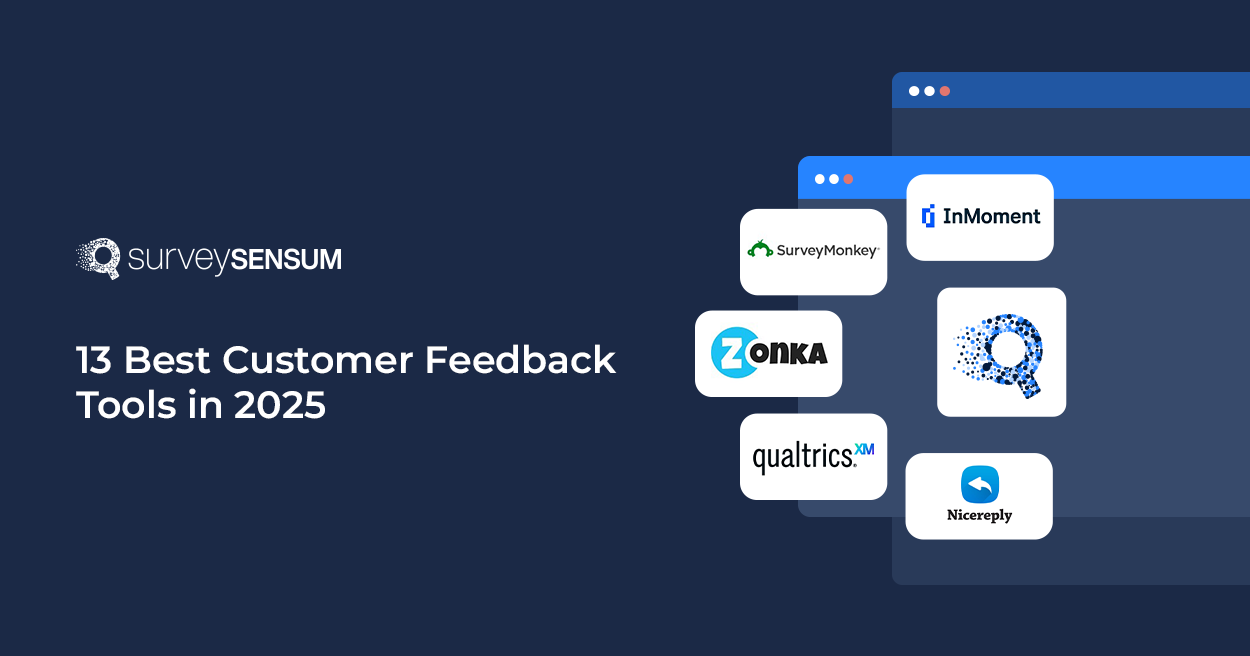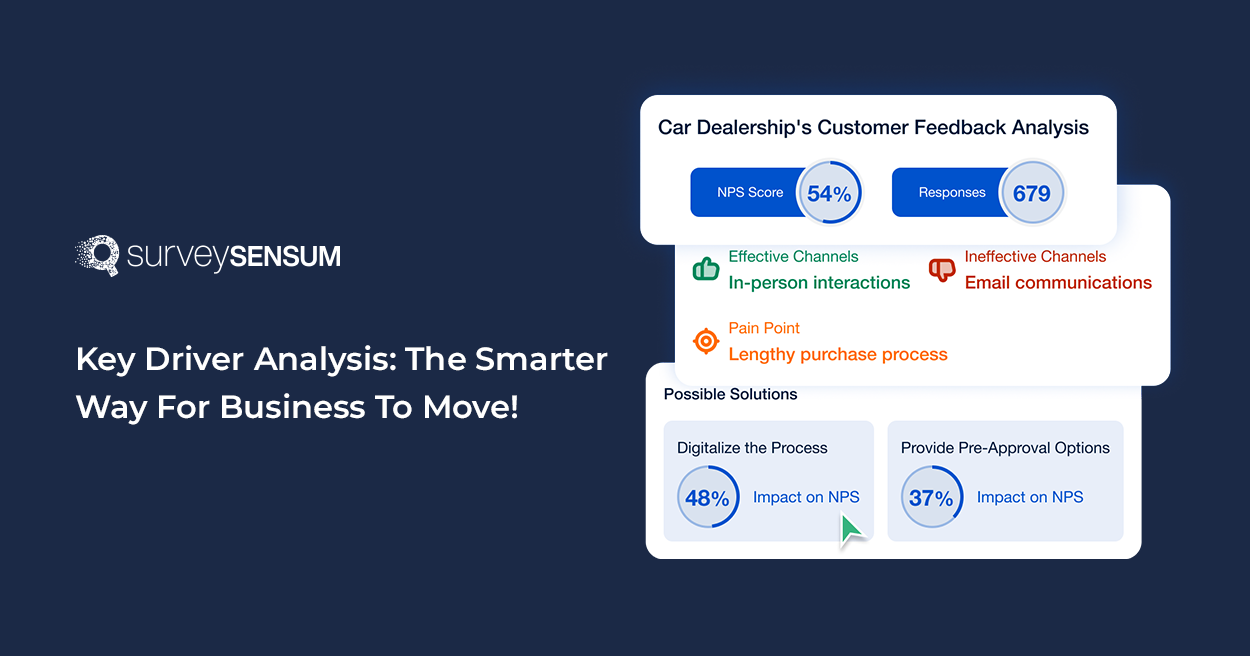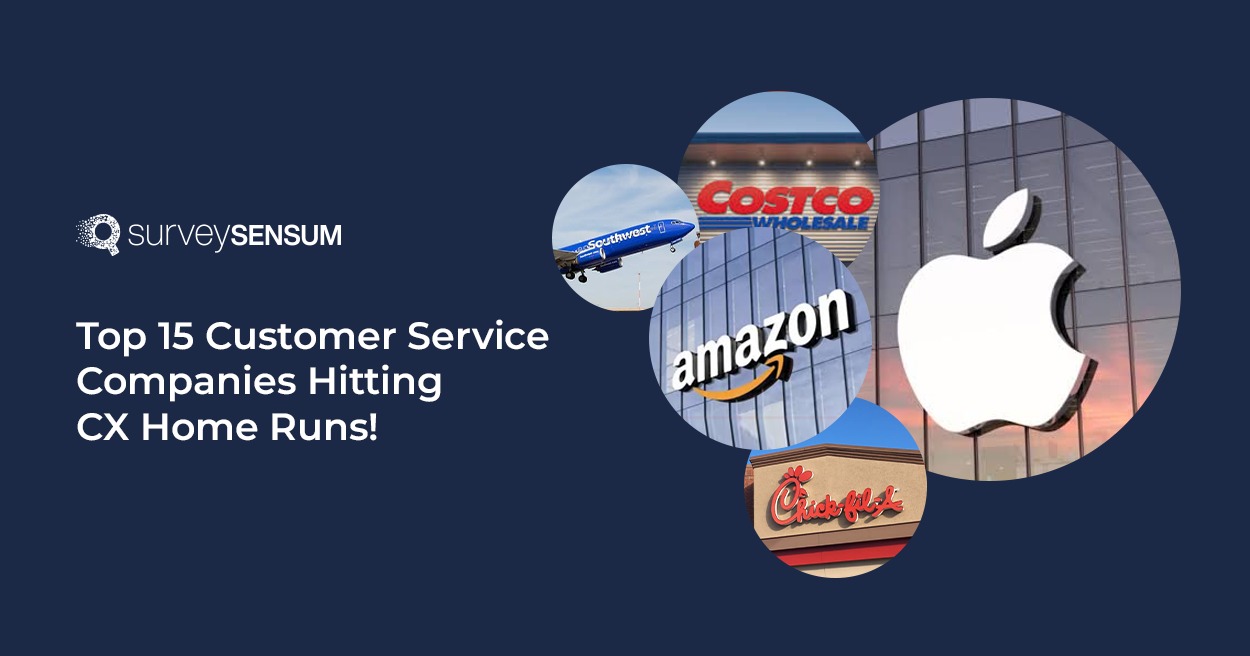
As we all know NPS is a customer satisfaction metric that is used by businesses to measure customer loyalty. But is merely launching NPS surveys enough?
No.
Along with creating NPS surveys and launching them, you also have to make sure that you get a higher number of responses that are both accurate and relevant. Conducting a feedback process requires a lot of investment and it all goes to waste if you do not get a high response rate.
→ The higher your response rate, the clearer the picture of your customer sentiment becomes. And that enables you to plan clearer and more accurate strategies to enhance your business performance, with the help of a robust NPS software
Now, to facilitate this effort of yours, we have listed down the 9 tried and tested strategies that will help you boost your NPS response rate.
But first, let’s get to know more about a good NPS response rate.
What is a Good NPS Response Rate?
A good NPS survey response rate typically depends on the industry, the size of your customer base, and the specific context of your NPS survey. However, as a general guideline:
- Low Response Rate: A response rate below 10% is considered low. While it still provides some insights, the sample size is too small to accurately represent your customer sentiment.
- Average Response Rate: An average response rate falls between 10% and 30%. This is a reasonable range for many businesses and can provide a decent understanding of NPS trends and customer sentiment.
- Good Response Rate: An NPS response rate above 30% is generally considered good. It indicates active engagement from your customer base and provides a more robust dataset for NPS analysis and decision-making.
- Excellent Response Rate: An excellent response rate is above 50%. This level of engagement demonstrates a high level of customer interest and satisfaction in providing feedback, leading to more accurate and actionable insights.
According to Bain & Company, the organization that invented NPS, B2C brands should really be aiming for response rates of 40% and above.
It’s important to note that achieving a high response rate is not just about the number itself but also the quality and relevance of the feedback received. Encouraging meaningful responses from a diverse range of customers, including both promoters, who are also likely to become brand advocates, and detractors, is key to deriving actionable insights from your NPS survey.
Talk to the NPS Experts at SurveySensum to launch an effective NPS program from end to end that actually drives results
So, yes a good response rate is required for a robust dataset for analysis and decision-making. But its benefits are not limited to this. Let’s discuss this in more detail.
Why Improving Your NPS Response Rate is Important?
Improving your NPS survey response rate is crucial for several reasons:
1. Increased Accuracy
A response rate of 60% or more is considered statistically significant for accurate insights into customer sentiment. And as you know, data accuracy is the most basic requirement in such a process. Therefore, this just proves that a higher response rate is necessary for a more accurate representation of customer sentiment.
2. In-Depth Understanding of The Customer
With more responses, you gain deeper insights into what drives customer loyalty or dissatisfaction. This allows you to identify specific areas for improvement and make data-driven decisions to enhance the customer experience.
3. Enhanced Customer Engagement
Actively seeking feedback shows customers that you value their opinions and are committed to addressing their needs. This can lead to increased trust, loyalty, and advocacy as customers feel heard and appreciated.
4. Opportunity for Improvement
A higher response rate provides more feedback on potential areas for improvement. This feedback is invaluable for refining products, services, and processes to better meet customer expectations and stay competitive in the market.
5. Brand Reputation
Demonstrating a proactive approach to gathering customer feedback and improving based on customer input enhances your brand’s reputation. Customers are more likely to view your brand favorably when they see that you are responsive to their feedback through interactions like customer service, and committed to delivering excellent experiences.
6. Competitive Advantage
Companies that maintain NPS response rates above 70% typically outperform competitors in terms of customer satisfaction scores and market share.
Therefore, by consistently improving your NPS response rate you can differentiate your brand from competitors. This proactive approach to customer satisfaction and improved customer retention can attract new customers and retain existing ones, giving you a competitive edge in the market.
Now that you know the importance of a high NPS response rate, let’s explore the actionable ways in which you can achieve the same.
9 Ways To Improve NPS Response Rate
Improving your NPS response rate involves implementing best practices that encourage more customers to participate in your survey. Here are some actionable strategies with examples, to help you boost your NPS response rate:
1. What’s Your Objective?
Before making NPS survey questions, think about what you want to achieve. Only ask for feedback when it’s important, so you don’t bother customers for no reason.
Think about the following questions:
- Transactional survey or relational survey?
- What aspects of the business are you looking to improve?
- Do you have the right NPS tools to carry out the NPS program?
- Entire customer base or a particular segment?
- Do you have an automation system in place to delegate mundane tasks?
This will help you make your survey more relevant and targeted and will also generate higher responses.
2. Set clear customer expectations
Customers do not really want to do something that you are asking them to, especially when they are not interested. So to make sure that you do not waste their time, tell them exactly what to expect:
- How long will it take them to complete the survey? Ideally, it should not be more than two minutes.
- How much you value their input. Showing gratitude to customers will prompt them to give a response.
- What do you plan on delivering in return? You should clearly state the actions that you will be taking on their feedback and also what incentives you can provide them for their assistance.
3. Keep it Mobile-Friendly

Nowadays, many people use their phones for work. This means your survey should be designed to fit well on smaller screens. Make sure it looks good on different types of phones like iPhones and Androids, works well on different internet browsers, and is easy to use on screens of all sizes, from small phones to iPads.
→ Know more about enhancing your survey design for effective data collection.
4. Personalize Your Survey Invitations

Address customers by name and personalize the invitation based on their previous interactions with your brand. Personalization makes customers feel valued and increases the likelihood of them engaging with the survey.
Example: “Hi [Customer Name], we value your feedback! Please take a moment to share your thoughts on your recent experience with us.”
Elevate your NPS response rates and take your company’s surveying process to the next level in no time with SurveySensum!
5. Time Surveys Appropriately

Timing surveys appropriately is crucial for increasing response rates and obtaining accurate and meaningful data. Decide how often you want to send NPS surveys. The frequency can vary depending on your industry, customer base, and the nature of your relationships. Common intervals include quarterly, semi-annually, or annually. Choose a schedule that aligns with your goals and resources.
Carefully manage the frequency of survey requests. Avoid bombarding customers with surveys, especially if they’ve recently responded to one.
→ Read further about when to send an NPS survey.
6. Offer Incentives

A $10 incentive increased the likelihood of someone returning a survey by 30% and boosted the number of returned surveys by 18%. So do not hesitate to provide incentives such as discounts, loyalty points, or entry into a prize draw for completing the survey. Incentives motivate customers to take the survey and increase response rates.
Example: “Complete our NPS survey and get 10% off your next purchase!”
7. Communicate the Value of Feedback

Explain to customers how their feedback will be used to improve products/services and enhance their experience. This encourages customers to provide thoughtful feedback, knowing that it will make a difference.
Example: “Your feedback helps us understand what we’re doing well and where we can improve to serve you better.”
8. Follow-up with Reminders
Send reminder emails or notifications to customers who haven’t responded to the survey initially. Reminders increase response rates and ensure that you gather feedback from as many customers as possible.

Example: “We noticed you haven’t completed our survey yet. Your feedback is important to us; please take a few minutes to share your thoughts.”
Now that you know all the ways to improve your NPS response rate, why wait? Launch surveys today in under 5 minutes with SurveySensum!
9. Segment Your Audience
Tailor survey questions and communication based on customer segments and send different types of NPS surveys to make the survey more relevant and engaging. This approach shows that you understand your customers’ needs and allows for more targeted feedback.
Example: A hotel sends different NPS surveys to business travelers and leisure travelers, focusing on aspects relevant to each segment.
10. Use Multiple Channels

Share the NPS survey with your customers over the channel they prefer. Be it WhatsApp. In-app, Emails, or SMS, understand where your customers spend most of their time and leverage those channels to maximize survey reach.
11. Act on Feedback

Gathering feedback is of no point if you won’t take action on it. So, show that you value your customers by taking action on feedback and communicating changes based on their input. This builds trust with customers and shows that their feedback is taken seriously.
→ Know more about closing the feedback loop and improving customer experience.

SurveySensum’s ticketing system triggers a ticket for every detractor and assigns it to the relevant team to close the feedback loop with a 2-hour SLA. If the issues remain unresolved, then the ticket is escalated to higher management – ensuring timely resolution.
12. Should You Color code the NPS scale
Using colors in NPS surveys can make them look nicer and work more effectively. Colors help convey information clearly and make people more interested in the survey. However, some experts have different opinions about using colors in NPS surveys.
→ Keep reading to learn what experts say about color coding NPS surveys.
13. 5-point or 11-point NPS scale
Deciding between a 5-point and an 11-point NPS survey depends on what are your requirements and what you want to achieve. A 5-point scale survey is easier to use on mobile devices, while an 11-point survey is better for benchmarking with other companies and gives a more detailed view of detractors, passives, and promoters.
Conclusion
Improving your NPS response rate is not just about measuring and calculating NPS; it’s about unlocking valuable insights and driving meaningful improvements in your business. By implementing the 9 actionable strategies discussed, you can enhance customer engagement, gather accurate feedback, and strengthen your brand’s reputation.
And to achieve this, you need a robust feedback tool like SurveySensum! It helps you gather responses with effective and engaging surveys in under 5 minutes. What’s more – you get access to AI-enabled features like Text Analytics and a comprehensive dashboard for your convenience that makes the process of analyzing feedback and creating actionable strategies simple and easy!















